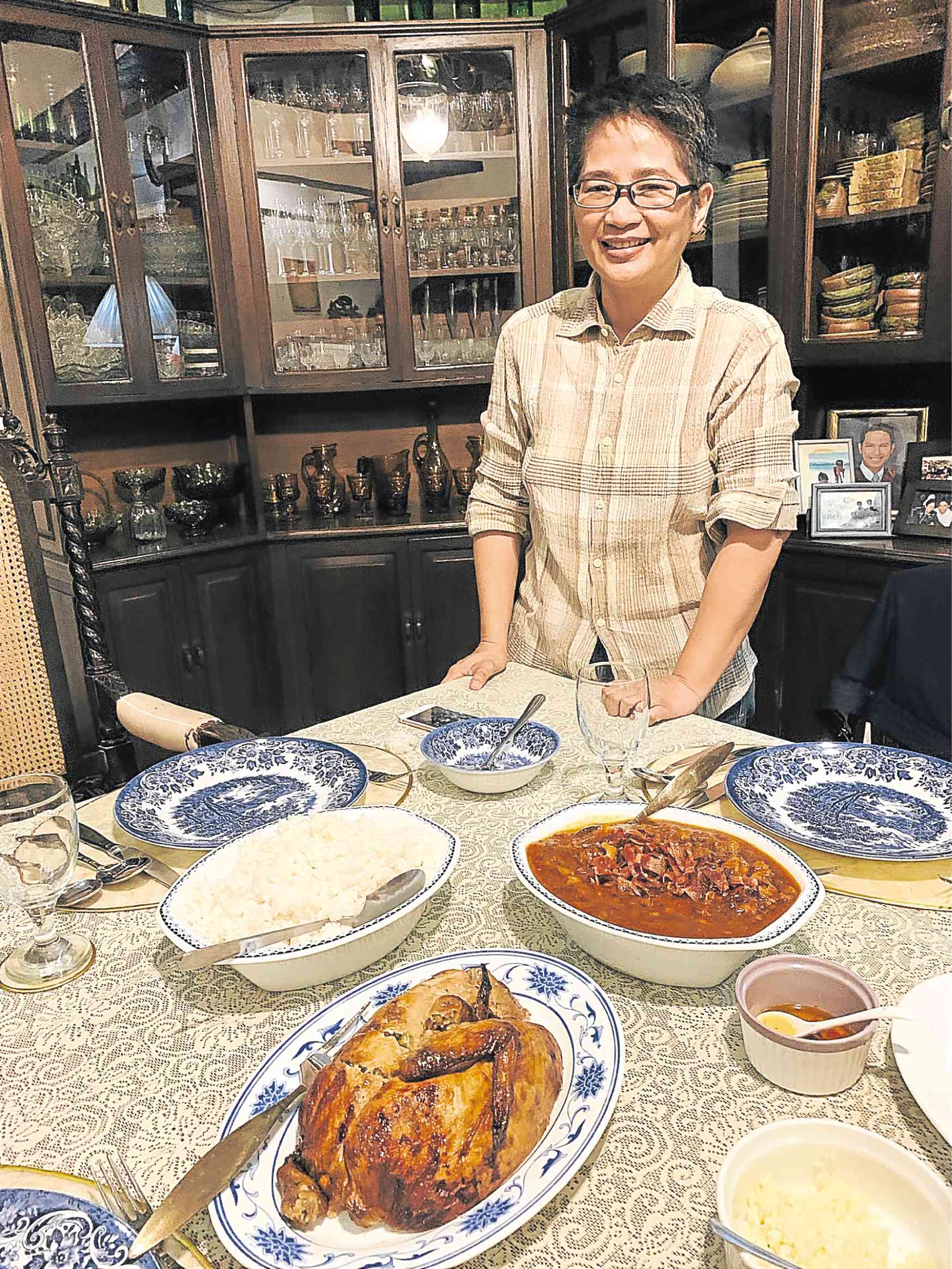Adarna settles in Quezon City

Chef Giney Villar brings heritage recipes to life in her private dining space in Quezon City —PHOTO BY MARGAUX SALCEDO
When a heritage advocate and a chef come together, what you get is not only a meal but an experience.
Beth Angsioco, human rights advocate and heritage enthusiast, invited me to dinner at her home in Quezon City last week. I was inclined to decline because traveling to Quezon City from Makati nowadays is quite the Quixotian task. “We might as well have dinner in Batangas,” I joked, since Angsioco also owns Feliza Cafe y Taverna that is 100 kilometers away from Manila.
But when she said her partner Giney Villar would be cooking, I said yes.
The last time I had chef Giney’s cooking was at their old restaurant in Quezon City, Adarna, which closed in January 2015. Adarna was known not only for its delicious Filipino food but for being a restaurant where one could fully experience Filipino culture.
After Adarna, they opened Feliza Cafe y Taverna in Taal, the heritage town in Batangas, in a century-old house (actually more than a century) originally owned by Felisa Diokno, the personal secretary of President Emilio Aguinaldo for decades. Feliza is known not only for the culinary experience offered by Villar but also for its impressive collection of historical memorabilia.
To heighten the heritage experience, Villar developed menus focusing on either historical, heritage or heirloom Filipino recipes.
A Filipiniana enthusiast and a writer herself, she won second place in the 2017 Doreen Fernandez (DGF) Writing Competition and had a column in Appetite Magazine. Her menus impressed guests as these were developed through extensive research and presented very creatively. For an Independence Day event at Feliza Cafe, she entitled her menu “Ibandila ang Lasang Pilipino: A Degustation Lunch inspired by the 1898 Malolos Convention.”
Feliza unfortunately has closed as a regular restaurant but fortunately continues to operate as a by-reservation dining venue. (Visit Feliza Taverna y Cafe on Facebook https://www.facebook.com/felizacafe).
Angsioco and Villar have recently opened their Metro Manila home for private dining as well.
Also called Adarna, the private dining space is even more enthralling than the original restaurant.
Guests enter by way of the wooden front steps designed in such a way that you feel like you are in Baguio or a Northern Luzon home. (Unfortunately, there is no elevator so this is not recommended for PWDs or seniors who cannot manage steep stairs.)
Upon landing, you enter their sala, which is beautifully decorated with paintings, Spanish-era themed pillows, a bust of Marcelo del Pilar, and if you look up, even the ceiling has its own story to tell as the wood came from the old Quiapo church.
The formal dining room looks like an old library with Angsioco’s personal book collection. A map of architect Daniel Burnham’s original plan for the city of Manila is also on display.
Then there is the main attraction: the cooking of chef Giney Villar. At our dinner, the chef served chicken relleno but not the ordinary cylindrical slab of relleno. This is inspired by the relleno served in our grandparents’ tables in the 1940s, a whole chicken stuffed with premium ingredients like chorizo and quezo de bola. But what was most impressive was the salsa monja that it came with—a sauce with garlic and olives, among other mesmerizers, that just changed the entire dish altogether.
By the way, Villar also makes a mean callos.
Today you can book a lunch or dinner at their home through the website The Traveling Spoon. This novel site targets tourists who would like to experience a country’s culture by having a meal not just at a restaurant but in a real home.
The site is all raves for Villar, who is given this introduction: “Her cooking starts with exhaustive research—she describes herself as a culinary sleuth and is constantly hunting down heirloom family recipes that are at risk of being forgotten. She researches which ingredients would have been available at the time and imagines what was in the pantry as she perfects the recipe. She loves the way that food can connect you to the history and culture of a place, creating a visceral connection to the past and making it a continuing story, which includes you.”
But more impressively, a Traveling Spoon ambassador, who vets the place before the site offers it to their followers, was all raves about his experience: “Giney’s home is majestic. It’s adorned with green and vines, like entering Alice in Wonderland. Hospitality is in Giney and Beth’s blood. I loved getting to know them and talking to them about so many things: food, politics, design, habits, activism, history.”
I think what makes the visit memorable, though, is not only the food or the memorabilia on display but the enthusiasm for our cultural heritage. You may find yourself singing the Lupang Hinirang so joyfully as you drive home.
For reservations and more info, visit Giney Villar’s Facebook page.

